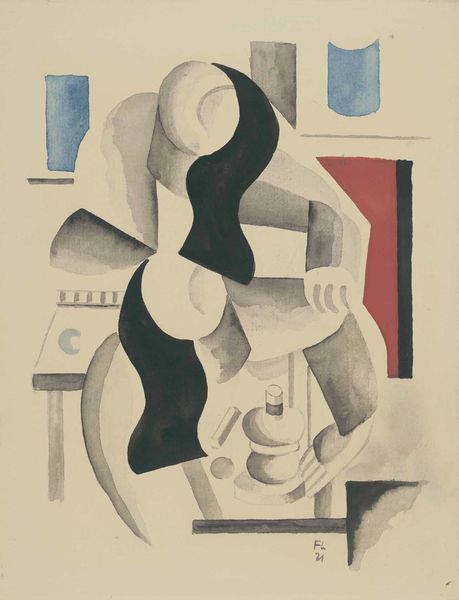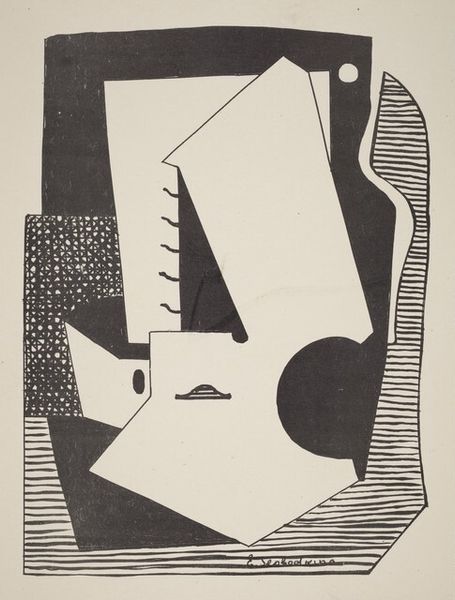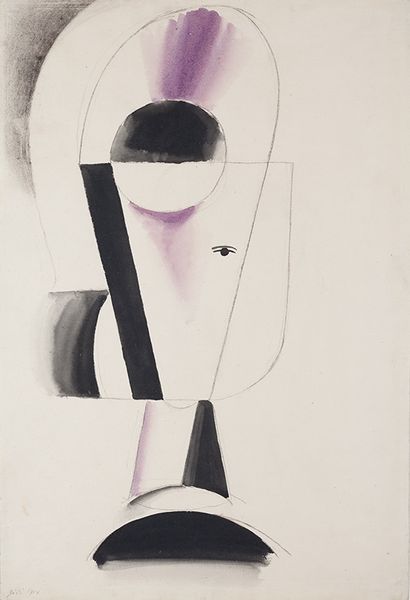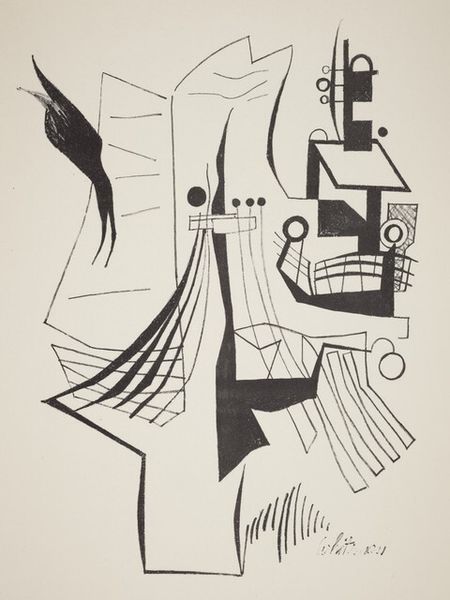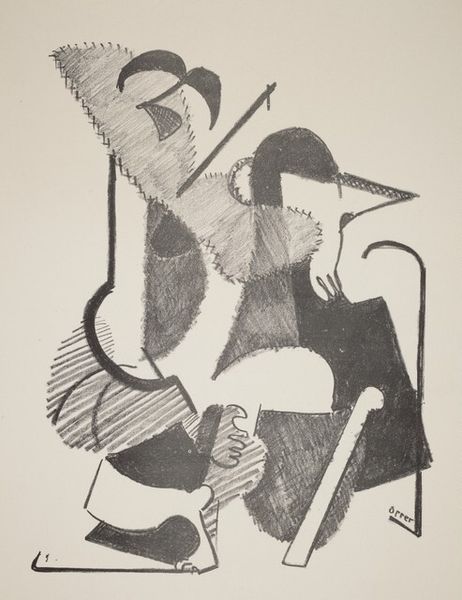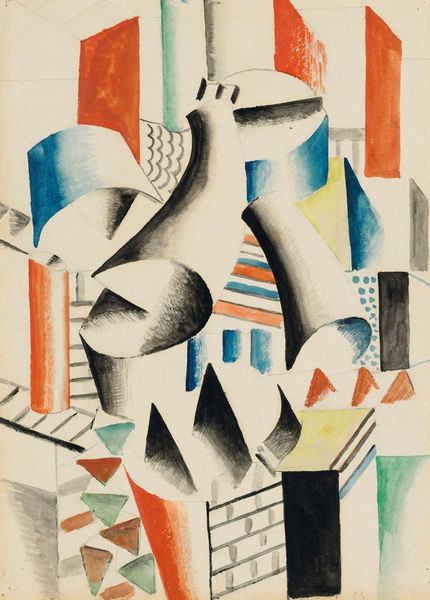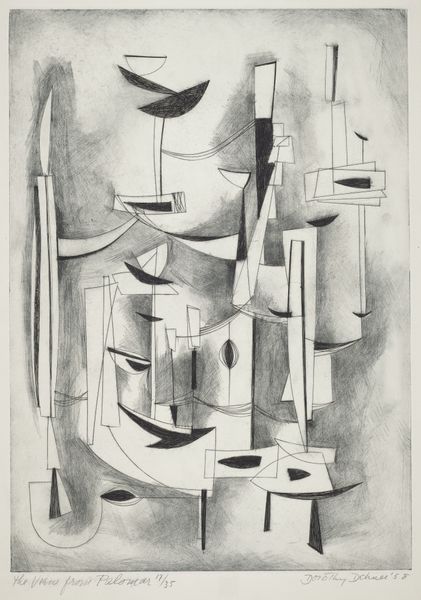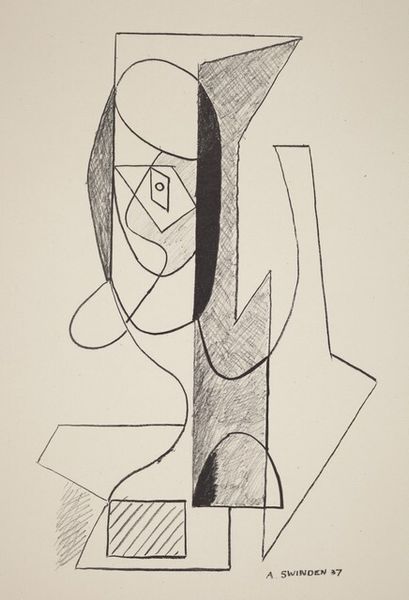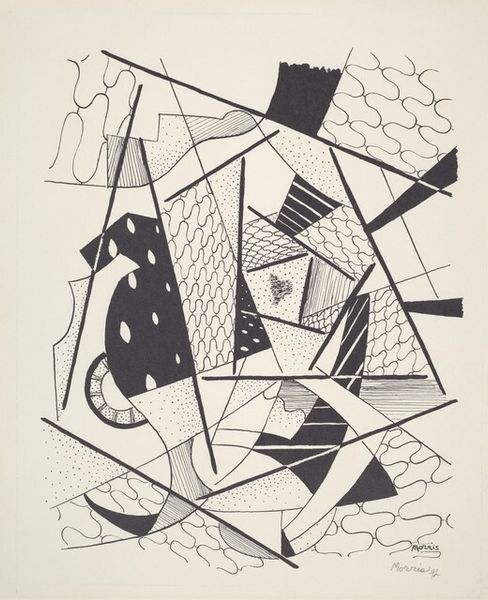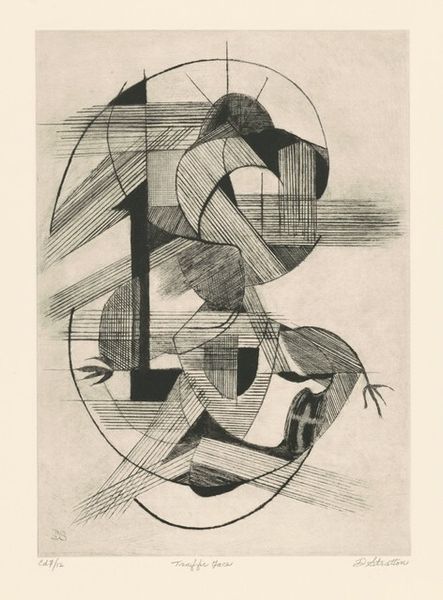
drawing, mixed-media, print
#
portrait
#
drawing
#
cubism
#
mixed-media
# print
#
harlem-renaissance
#
abstract
#
geometric
#
line
Dimensions: image: 12 1/2 x 8 1/2 in. (31.8 x 21.6 cm) sheet: 15 x 10 1/2 in. (38.1 x 26.7 cm)
Copyright: Public Domain
Curator: We are looking at Sargent Claude Johnson’s "Lenox Avenue," created in 1938. This piece embodies the spirit and cultural vibrancy of Harlem during the Harlem Renaissance. Curator: It's an intriguing composition! At first glance, the interplay of geometric forms evokes a very cool and measured feel, quite cerebral in its presentation. Curator: Precisely. Johnson's work here is a powerful reflection on identity and community. Lenox Avenue, as the heart of Harlem, represented black cultural expression, political organization, and a striving for equality during a period marked by significant racial tension and segregation. This mixed-media drawing offers an abstracted view of its energy. Curator: I’m interested by how the artist dissects the human face. It is so meticulously broken down and rebuilt using planar forms, lines, and textures, and what appears to be a superimposed keyboard. I wonder how those components play into an underlying structure. Curator: The fragmentation you observe serves a purpose. This reflects the multifaceted experiences and identities of African Americans at the time, where social, political, and personal spheres intersected. The piano keys are essential. The location served as a cultural hub for artistic innovation, where music, literature, and art amplified Black voices and challenged mainstream narratives. Curator: Do you believe, perhaps, that those abstracted facial planes, coupled with elements of what appears to be Cubist aesthetics, give the composition some expressive power and an interesting tension between representation and abstraction? Curator: Absolutely! It engages directly with debates around representation and authenticity. Artists during the Harlem Renaissance were working to redefine how Black identity was portrayed. And pieces like this offer sophisticated engagements with both the visual language of European Modernism and the Black experience of that moment. Curator: Now, thinking more on it, the high-contrast drawing emphasizes shape and texture over pure representation. It forces viewers to consider visual relationships divorced from explicit narrative. The title definitely recontextualizes its content and affects a shift in understanding and meaning. Curator: Johnson has definitely left us something layered. To delve into the formal elements gives insights, yet to recognize the history gives rise to deeper significance in the community experience. Curator: I concur entirely. The composition definitely presents some challenging but rewarding puzzles.
Comments
No comments
Be the first to comment and join the conversation on the ultimate creative platform.

